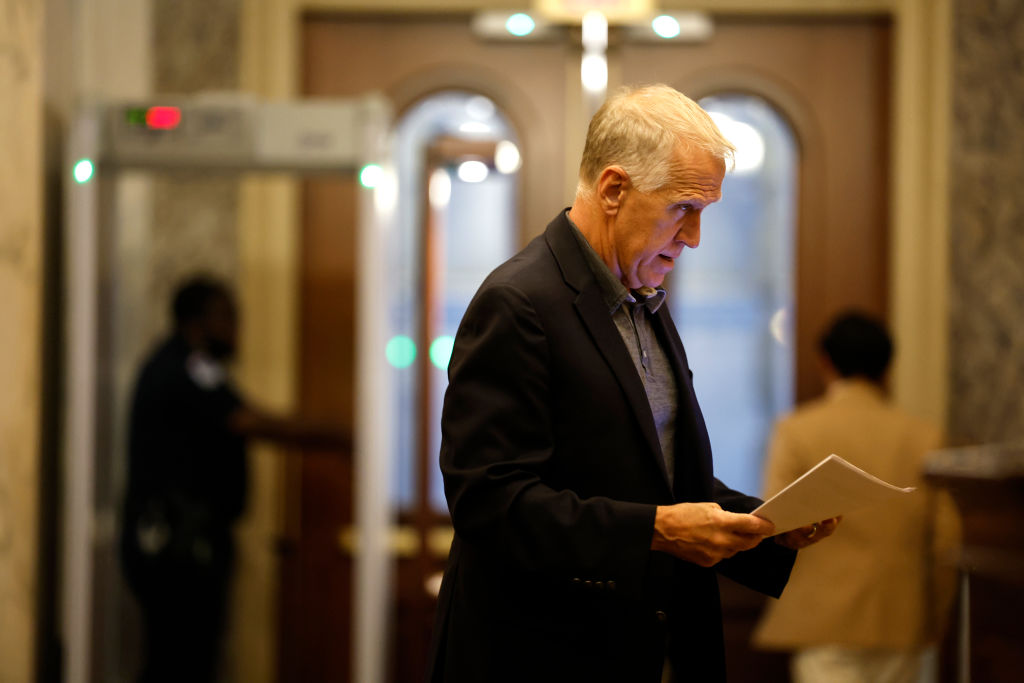The war in Ukraine could return to the forefront on Capitol Hill as early as January, at a time when a new administration will be coming in and the Senate will be busy confirming the incoming president’s Cabinet nominees. That’s when lawmakers believe the most recent $60 billion U.S. aid package will start to dry up.
So pro-Ukraine Republicans are already batting around ideas about how to get Congress some additional time in early 2025 — regardless of who wins the presidency and which parties control the Senate and House.
“What we don’t want to have is a lapse,” Sen. Thom Tillis (R-N.C.), a member of the Senate GOP leadership team, told us. “And we’re going to have to build a case for the Trump administration — I’m presuming he’s going to win, I think he’s the odds-on favorite — but I’d like to have some flexibility depending on how long it takes.”
While Tillis said he’s confident that the United States will “sustain the investment in Ukraine” under a second Donald Trump presidency, the North Carolina Republican acknowledged that he and other GOP defense hawks will have some work to do.
“We don’t want [Russian President Vladimir] Putin to see the risk of some sort of lapse or a loss of momentum,” Tillis added. “And the best way to do that is to build up results toward the end of this Congress, leading into the next one.”
Of course, Trump has been hostile to continuing U.S. aid for Ukraine, insisting that he could quickly broker a peace deal. Ukraine’s leaders have said they won’t negotiate with Russia, noting this would almost certainly require them to give up territory.
Tillis wouldn’t go as far as to suggest that his efforts amount to contingency planning specifically in case Trump wins. But Tillis said he wants to do whatever it takes before the end of this year to “give us some more runway” come January and avoid a situation in which Congress’ dysfunction isn’t once again harming Ukraine on the battlefield.
What that could entail: Let’s start off by saying anything related to Ukraine is going to be a lightning rod politically. So sneaking new authorities or funding into the end-of-September CR or another must-pass measure in the lame-duck session isn’t going to be easy.
New funding before the end of the year is going to be nearly impossible. That’s mostly because House Republicans would never go for it.
But Tillis’ goal of extending the runway for the current aid package could be met by tweaking existing Pentagon authorities that would give the Biden administration more flexibility to continue sending weapons to Ukraine, potentially by drawing from other funding streams or expanding presidential drawdown authority.
This could be achieved through the annual must-pass defense authorization bill. Sen. Jerry Moran (R-Kan.) told us he wants to see Congress “play a bigger role in these issues” regardless of who’s in the White House.
“Ukraine has shown, if we give them the resources, they’ll fight for their own country very effectively,” added Sen. Roger Wicker of Mississippi, the top Republican on the Armed Services Committee.
This has been a criticism of the Biden administration from Democratic hawks too, that the White been too slow in transferring more sophisticated weapons and equipment to Ukraine.
View from leadership: Senate Majority Leader Chuck Schumer told us in a recent interview that the United States is “going to have to keep funding” Ukraine, and that he’s willing to do it.
“I’ll work with whoever to get that done,” Schumer added, citing the fact that he’d have GOP cooperation.
But Schumer may not be in charge come next year, with Republicans favored to win control of the chamber. And Senate Minority Leader Mitch McConnell, who has taken on his own party in support of Ukraine, will no longer be the GOP leader.
Two of McConnell’s potential successors are in his camp when it comes to Ukraine, but the outlook for Kyiv will heavily depend on who wins the presidency.





